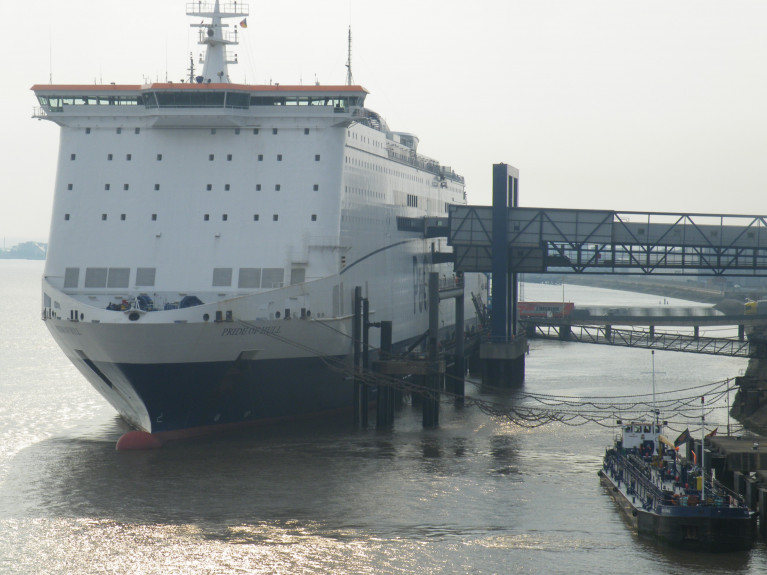Displaying items by tag: UKEU landbridge
P&O Cruiseferry Giant on UK-EU 'Landbridge' Route Returns to Humber after Engine Room Fire
P&O Ferries operator on the Irish Sea in addition to a North Sea 'landbridge' link to mainland Europe served by Pride of Hull was stranded with almost 300 passengers on board after an engine room fire.
The fire took place on board the Pride of Hull which was reported about 21:00 BST on Tuesday, said HM Coastguard.
All 264 passengers and crew are safe aboard the ferry travelling from Hull to Rotterdam.
It is anchored in the River Humber (see Pre-Brexit) following the fire, the coastguard added.
P&O Ferries said it would return the ship to port later and assess the damage after a fire in one of the engine rooms.
An Associated British Ports spokesman said: "We continue to support the ship and will be assisting in her safe return to the Port of Hull as soon as possible."
BBC News has further details of the incident.
Afloat adds as of this afternoon, Pride of Hull berthed at its routine Humberside terminal (see photo above). Sister Pride of Rotterdam belong to some of the largest cruiseferries operating in Europe and worldwide with each ship of almost 60,000 gross registered tonnage, noting Irish Ferries W. B. Yeats is 54,975.
A pair of P&O ropax ferries currently on the Irish Sea, Norbay and Norbank had served Hull-Rotterdam though firstly for operator North Sea Ferries, a subsidiary of P&O Ferries.
In 2002 the ropax twins transferred to the Dublin-Liverpool route where running since the summer is the chartered in freight-only Misida, as Afloat previously reported.





























































